One of the greatest French artists of post-Impressionism, Henri de Toulouse-Lautrec (Henri-Marie-Raymond de Toulouse-Lautrec-Montfa; Albi, 1864-Saint-André-du-Bois, 1901) was one of the most important transitional figures between Impressionism and Expressionism, was one of the sharpest and most interesting draughtsmen of his time, capable of works of great sagacity and depth (and his almost filiform style was also applied to his paintings), a frequent visitor to the slums of Paris, and above all was an artist who sensed the connections that art could establish with advertising (he was in fact one of the first artist-publicists). His numerous posters, created for companies and venues, are famous.
Of aristocratic origins, he was one of the most eminent figures in late 19th-century Paris, an environment that often provided him with cues for his work and, as mentioned, he was among the leading artists of the generation that followed that of the Impressionists, along with other greats such as Georges Seurat, Paul Gauguin, Vincent van Gogh, and Paul Cézanne. Toulouse-Lautrec is also known to have had an eventful life: suffering from a disability (probably due to a genetic disease) that prevented him from normal development of his lower limbs, Henri de Toulouse-Lautrec reacted, however, through art but also by devoting himself to his passions, particularly alcohol, but also to cooking (he was apparently a very skilled cook, so much so that a posthumous book of his recipes was later published) and, of course, to nightlife, Toulouse-Lautrec being a habitué of the haunts of bohemians, café-chantants, and brothels. But today he is remembered above all for his highly innovative art.

Henri-Marie-Raymond de Toulouse-Lautrec-Montfa was born at the Hôtel du Bosc in Albi, southern France, on November 24, 1864, to Alphons Charles, Count of Toulouse-Lautrec-Montfa, and Adèle Zoë Tapié de Celeyran. Of noble origins, he never held the title of count because he did not survive his father (in fact, he died prematurely at age thirty-six). At the age of eight he went to live with his mother (who had separated from her husband in 1867) in Paris, where he began for pleasure to draw, mostly caricatures. The family soon realized his talent and had him take lessons from the painter René Princeteau, a friend of his father’s and an artist who specialized in depicting animals (so much so that Toulouse-Lautrec’s first known works are depictions of horses). In 1875, the artist, at the age of eleven, returned to Albi for health reasons (in fact, signs of the disease had already begun to appear: at the time, moreover, it was attributed to the family history of consanguinity, since father and mother were first cousins) and spent some time at the Amélie-les-Bains spa. At thirteen he fractured his right femur and at fourteen his left: the fractures would never heal properly. As an adult, Toulouse-Lautrec would grow to be 1.52 m tall: the fact that he could not participate in all the activities typical of a young boy prompted him to devote himself entirely to art. After graduating from high school in Toulouse, he returned to Paris in 1882 to study with Léon Bonnat and then with Fernand Cormon, in whose atelier he remained until 1886. In Paris he also got to know Vincent van Gogh and �?mile Bernard.
Settling in Montmartre, he exhibited his work for the first time in 1885 at Aristide Bruant ’s cabaret Mirliton (which would later become the subject of one of his celebrated portraits). In 1887 he exhibited in Toulouse under the pseudonym “Tréclau,” the verlan variant of the surname “Lautrec,” after which he exhibited in Paris along with Van Gogh and Louis Anquetin. In 1885 he began an affair with Suzanne Valadon, which ended three years later. Between 1889 and 1894 Toulouse-Lautrec participated regularly in the Salon des Indépendants and in the meantime had befriended Van Gogh (moreover, in 1888 Theo Van Gogh had purchased a work by Toulouse-Lautrec at the Goupil Gallery), so much so that at a dinner in Brussels in 1890 he challenged Henri de Groux, who had criticized Van Gogh, to a duel (and Signac joined him, saying he would fight to defend Van Gogh if Toulouse-Lautrec was killed): in the end the duel did not take place because De Groux apologized for offending the Dutch artist. In the meantime, Toulouse-Lautrec had become a frequent visitor to the clubs of Paris (the Moulin de la Galette, the Café du Rat-Mort, the Moulin Rouge, and many others) and had begun to make several trips (in addition to Brussels, he would later travel to Spain and London: to the English capital he would return several times, almost every two years, London being the city that most attracted him outside of Paris).
Between 1889 and 1892 he intensified his production of paintings with scenes from the Moulin Rouge and the Moulin de la Galette, while paintings and drawings on the theater, brothels and the circus, other well-known themes of his art, date from the following three years: the Elles series of lithographs, dedicated to the prostitutes of the maison close on the rue d’Amboise, where the artist had set up residence in 1892(read an in-depth study of the series here), is one of the most famous of the period. Soon, however, his problems with alcoholism began to get the better of him: in 1899 he was admitted to a sanatorium in Neuilly-sur-Seine following an intervention by his mother who feared for his health (he produced several circus-themed works during his hospitalization), but there was little he could do. In March 1901 he suffered a stroke, which left him paralyzed, forcing him into a wheelchair. A new stroke struck him on August 15, 1901: he later went to live with his mother in the Château de Malromè, one of the family estates in the Saint-André-du-Bois area, and died there on September 9, 1901, at the age of thirty-six.
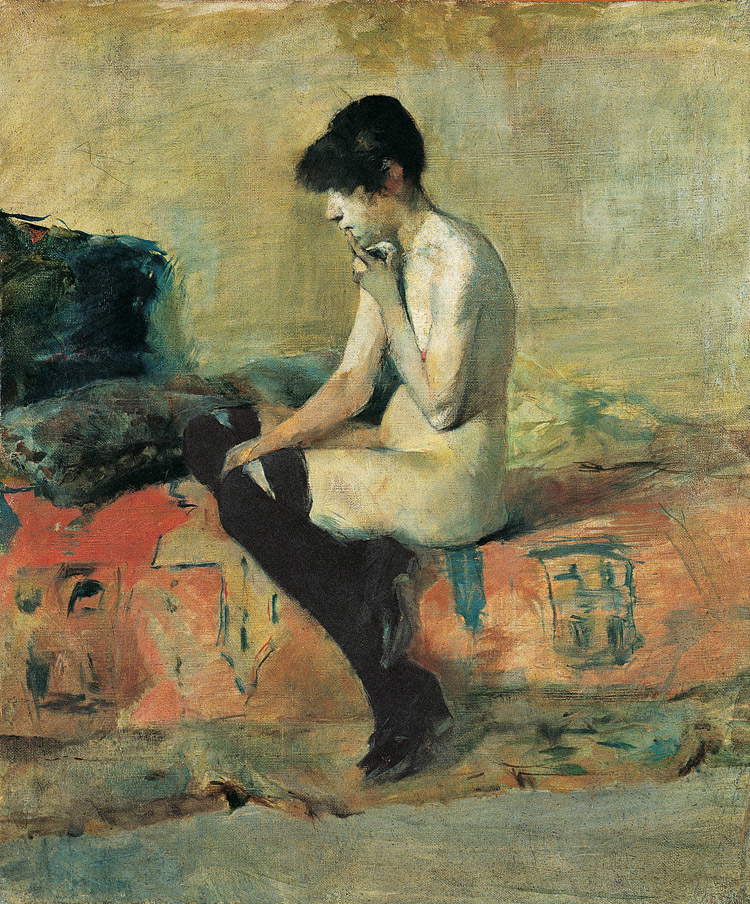
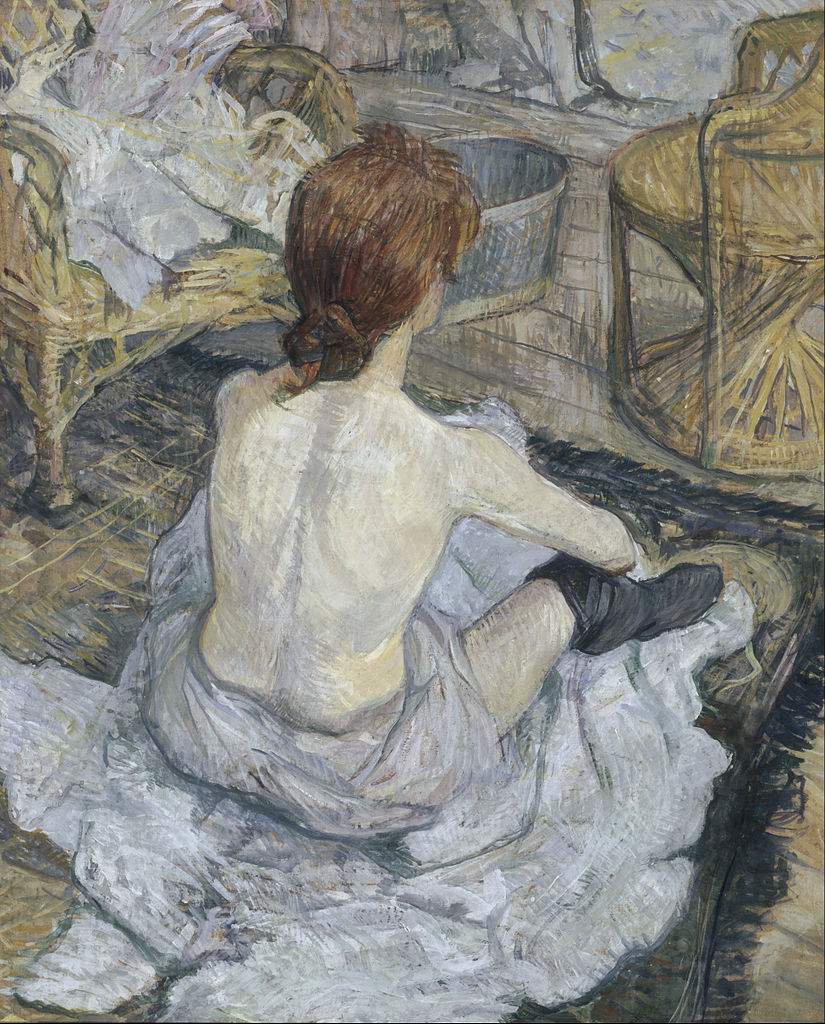
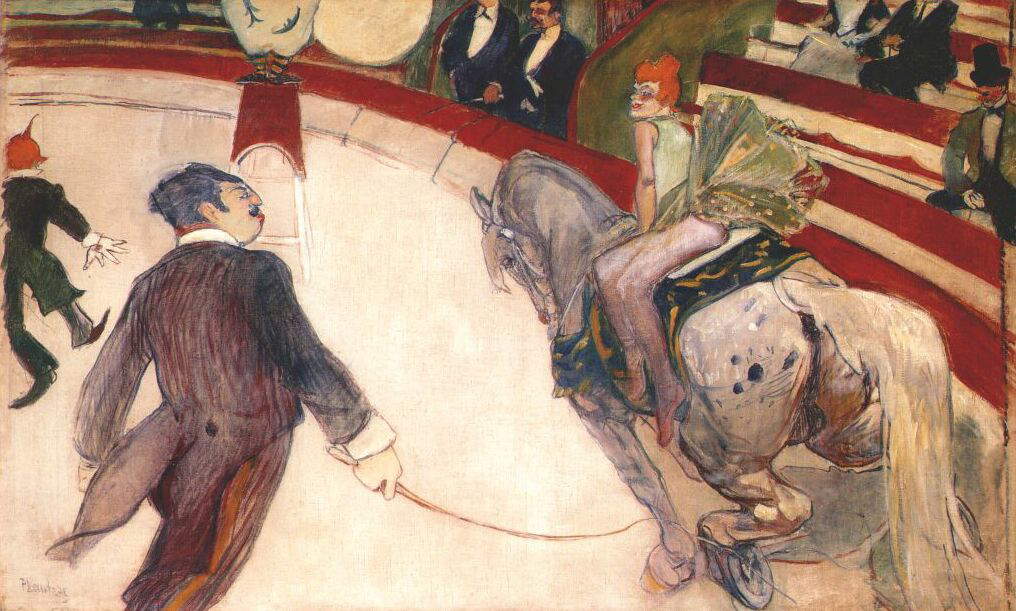


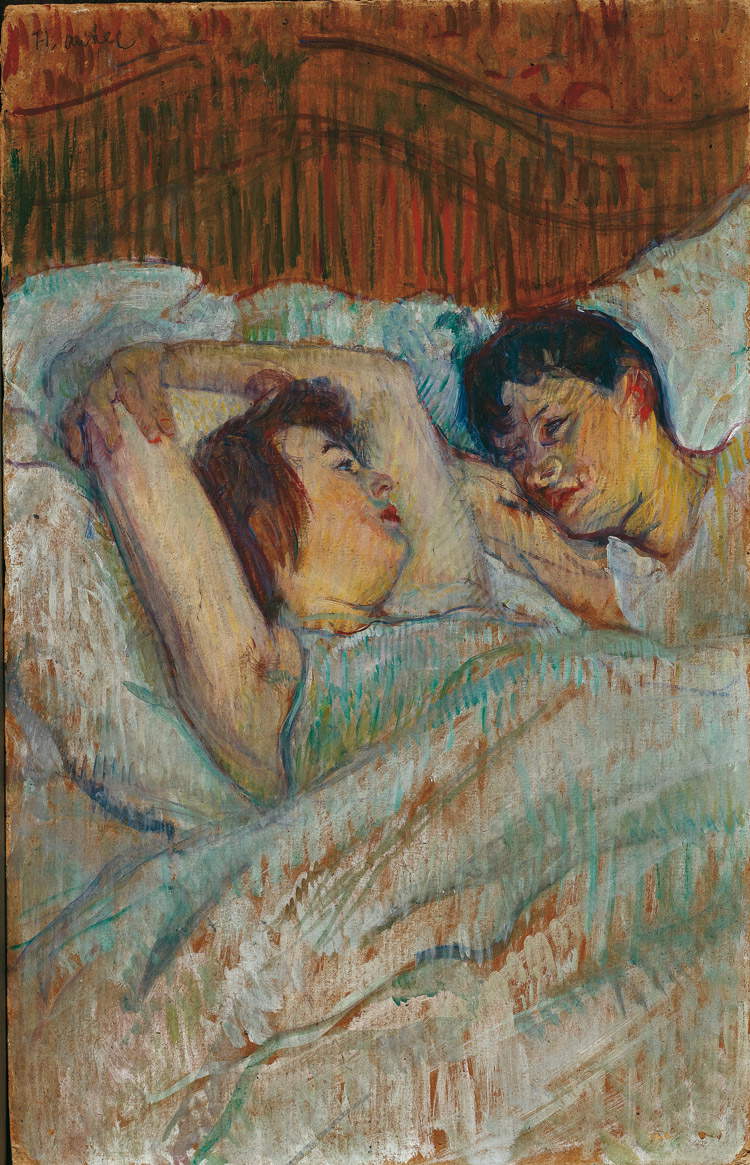
Despite a very short life, Henri de Toulouse-Lautrec was a rather prolific painter, since the catalog raisonné of his works, published in 1971, lists 737 paintings, 275 watercolors, 369 lithographs and 4,784 drawings. During the first phase of his activity he was artistically linked especially to Edgar Degas, as seen in paintings such as La Toilette in a private collection or theEquestrienne at the Art Institute of Chicago. In addition, Toulouse-Lautrec had been one of the first European artists, along with Van Gogh, to look to Japanese prints, from which he borrowed the essential graphic sign and the almost flat planes that would characterize mainly his graphic work but are also seen in some paintings (e.g. Un coin du Moulin de la Galette preserved at the National Gallery in Washington). Drawn from Japanese prints are also the strong diagonals, as seen in Au Moulin Rouge, one of Toulouse-Lautrec’s most famous works, which is in the vein of paintings that translate the nightlife of late 19th-century Paris onto canvas. (The artist, however, was interested in shadows rather than lights, and in particular in the tragic stories and derelict humanity that frequented these places: equivocal characters, drifters, exploiters, dancers who sold their bodies when necessary, the bored rich: Toulouse-Lautrec’s works are always animated by a vein of disquiet).
Beginning in the 1990s, Toulouse-Lautrec’s paintings take on the style for which they are universally known: the well-defined outlines, the uniform backgrounds (thus also derived from Japanese prints), the loose brushstrokes that instead bear the marks of his early interest in expressionist art, and the artificial luminism. His painting, fast and very linear, was the result of a strong passion: being from a wealthy family and therefore not needing to paint for a living, he could afford the luxury of not working on commission. His favorite subjects were women, and in particular dancers and harlots, who became the main protagonists of his paintings by virtue of their spontaneity: in fact, Toulouse-Lautrec loved the way they moved and juggled among customers and in clubs. In his depictions of dancers and prostitutes, however, Toulouse-Lautrec did not linger on moralism or sentimentality: what shines through is truth and humanity. Another theme that dominates Toulouse-Lautrec’s production is the circus: as mentioned, Toulouse-Lautrec’s early works are depictions of animals, and the artist, as soon as he could, went to see the circus (the Cirque d’Hiver and the Cirque Fernando in particular) to paint horses. But the circus was important to Toulouse-Lautrec because it matched well with his nonconformist and exhibitionist nature, and moreover the movements of the acrobats and animals fascinated him.
Particularly important is thegraphic work of Toulouse-Lautrec, as he was one of the greatest and most highly regarded draughtsmen of his time, as well as one of the first artists to realize the potential that art could offer to advertising. The artist thus willingly lent himself to designing posters for the cafes he frequented. The novelty introduced by Toulouse-Lautrec to the contemporary world, Danièle Devynck and Claudia Zevi pointed out on the occasion of the exhibition Toulouse-Lautrec. The Fleeting World (Milan, Palazzo Reale, Oct. 17, 2017 to Feb. 18, 2018) that they curated, was the way he depicted artists and dancers through unaffiche. He was the first to perceive the need to invent a new style for that new, typically urban artistic genre that is the poster. Showing himself sensitive to the influx of Japanese prints, Lautrec employed impetuous lines, bold compositional cuts, intense and flat, ringing colors that, applied evenly over extensive surfaces, made the poster visible even from a distance, easily recognizable at first glance and, above all, attractive to the potential consumer. These are characteristics that are evident in one of his most famous posters, Divan Japonais of 1893, created for the restaurant of the same name: the oriental-style décor, combined with manners reminiscent of Japanese art, make the artist’s sources of inspiration obvious.
Toulouse-Lautrec’s graphic art is made up of extreme stylizations, close-ups, unusual poses, and particularly daring visuals: this can be seen in famous posters such as Aristide Bruant, where the well-known cabaret performer appears as a mass of blue color surmounted by his scarf and his portrait rendered with just a few lines, or as in Jane Avril, where the singer takes on an almost threadlike appearance, or again as in May Milton, where the profile of the protagonist is similarly rendered with just a few graphic signs. These were, however, works that required commitment and study, as attested by the advertisement for the Simpson bicycle chain(read an in-depth study here), which was preceded by many drawings. On the subject of his graphic activity, Giulio Carlo Argan wrote that Toulouse-Lautrec “was the first to sense the importance of that new artistic genre, typically urban, which is advertising: drawing an affiche or the cover of a program constituted, for him, a commitment no less serious than making a painting. And it is understood: in advertising, communicating to solicit is more important than representing. If representation is something that is fixed and prospective, communication creeps in and strikes: for the first time, with Toulouse, the artist’s activity no longer tends to conclude in a finished object, the painting, but unravels in the uninterrupted series of paintings, engravings, drawings, in the sketchbook that one leafs through as one would read a collection of poems.”


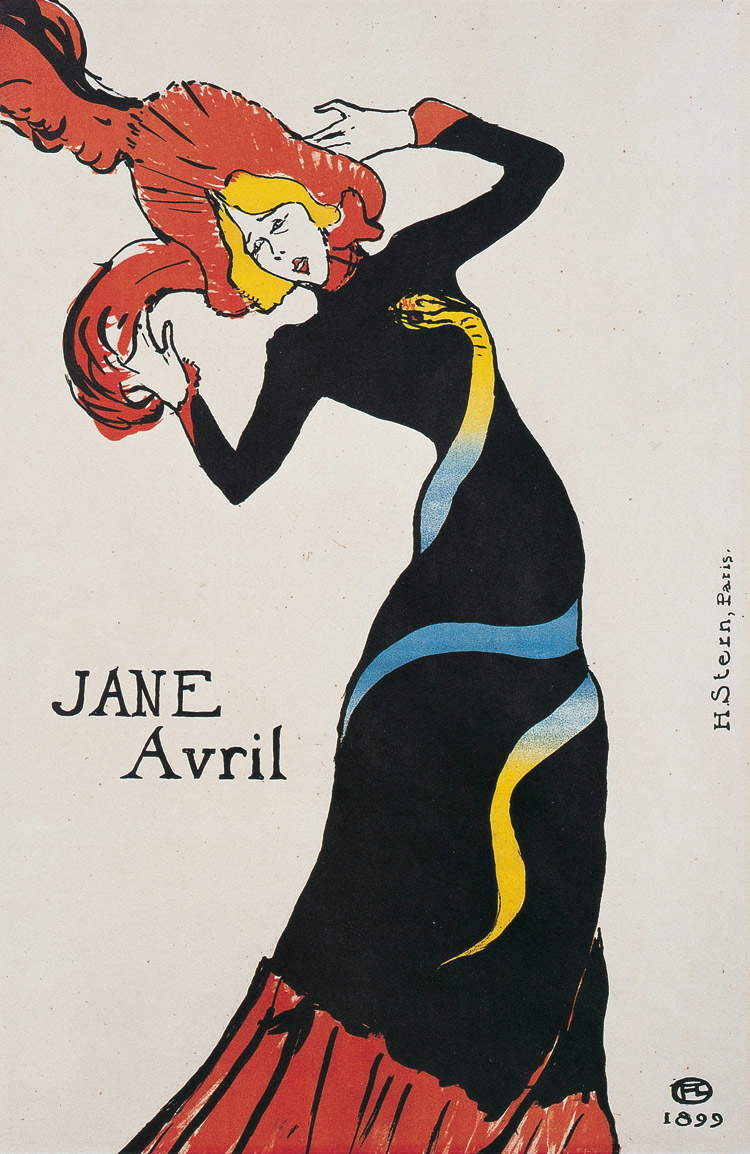
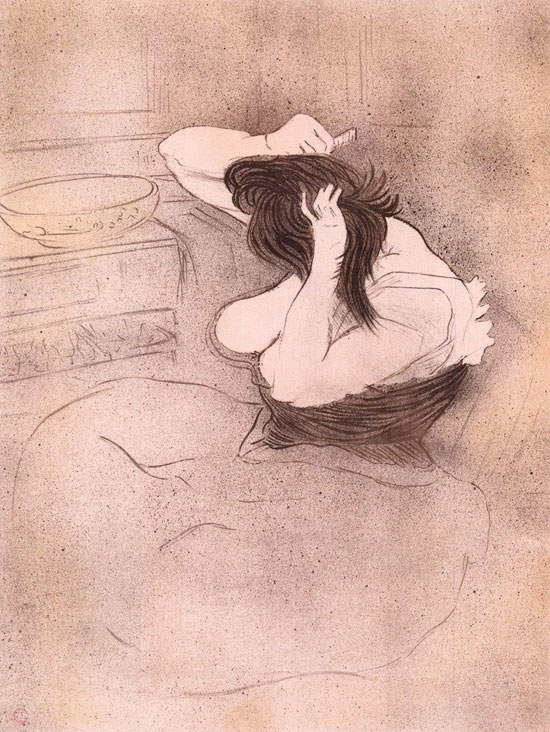

The main nucleus of Toulouse-Lautrec’s works can be found at the Toulouse-Lautrec Museum in Albi, his hometown: the institution was opened at the behest of the family in 1922, although since his death in 1901 relatives had been trying to have his works publicly exhibited (the city of Albi was chosen because the Parisian museums refused Henri’s mother’s donation). Every year the museum is visited by about two hundred thousand people. Secondly, it is possible to visit the Musée d’Orsay in Paris, which houses another important nucleus, but Henri de Toulouse-Lautrec’s works are also very present in American museums, from the Art Institute of Chicago to the Philadelphia Museum of Art, from the National Gallery in Washington to the Dallas Museum of Art.
In Italy there are no paintings by Toulouse-Lautrec. However, the situation is different for lithographs, which are instead found in many collections and are regularly exhibited in shows throughout the country.
 |
| Henri de Toulouse-Lautrec: life and works of the early advertising artist |
Warning: the translation into English of the original Italian article was created using automatic tools. We undertake to review all articles, but we do not guarantee the total absence of inaccuracies in the translation due to the program. You can find the original by clicking on the ITA button. If you find any mistake,please contact us.